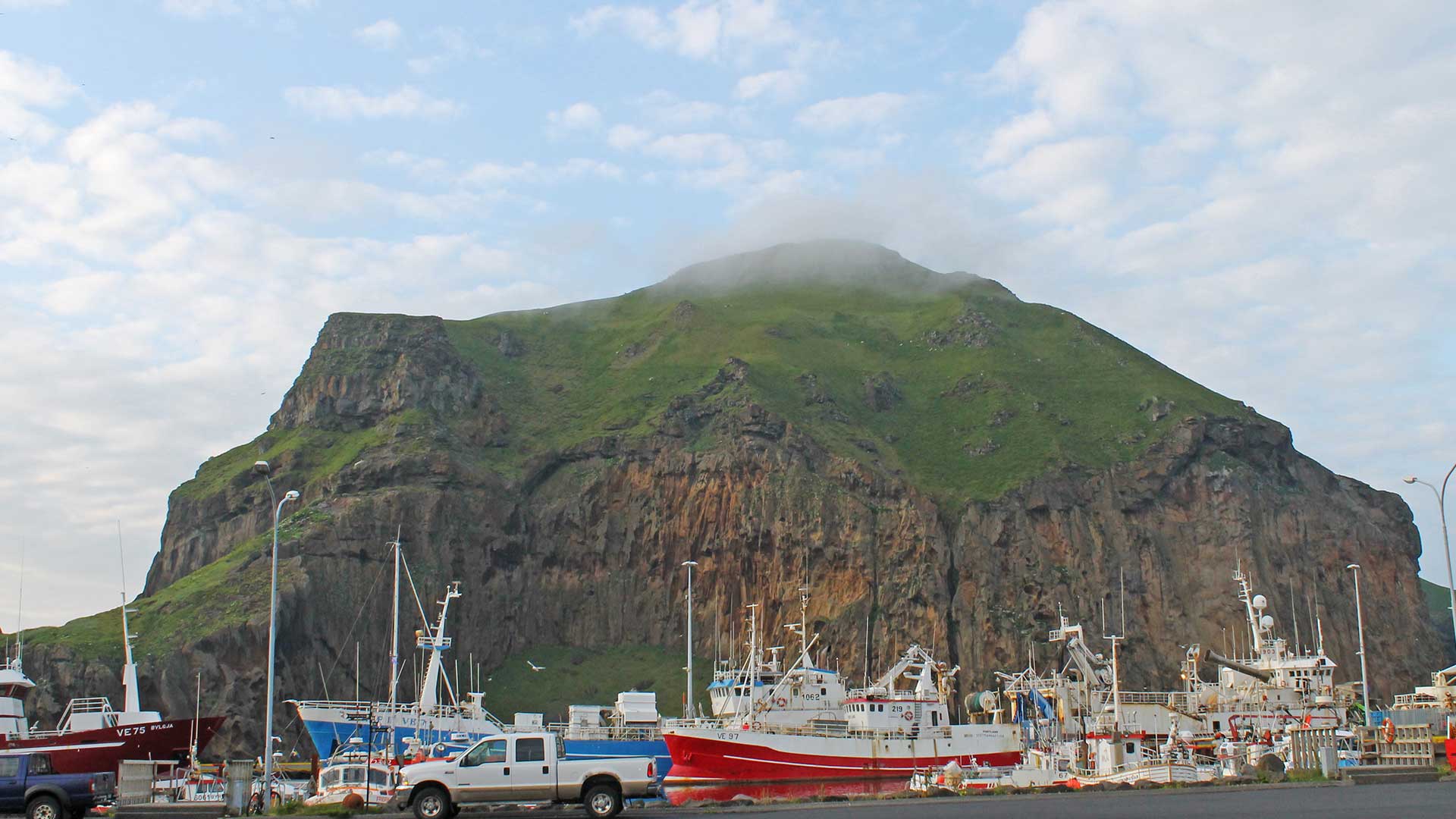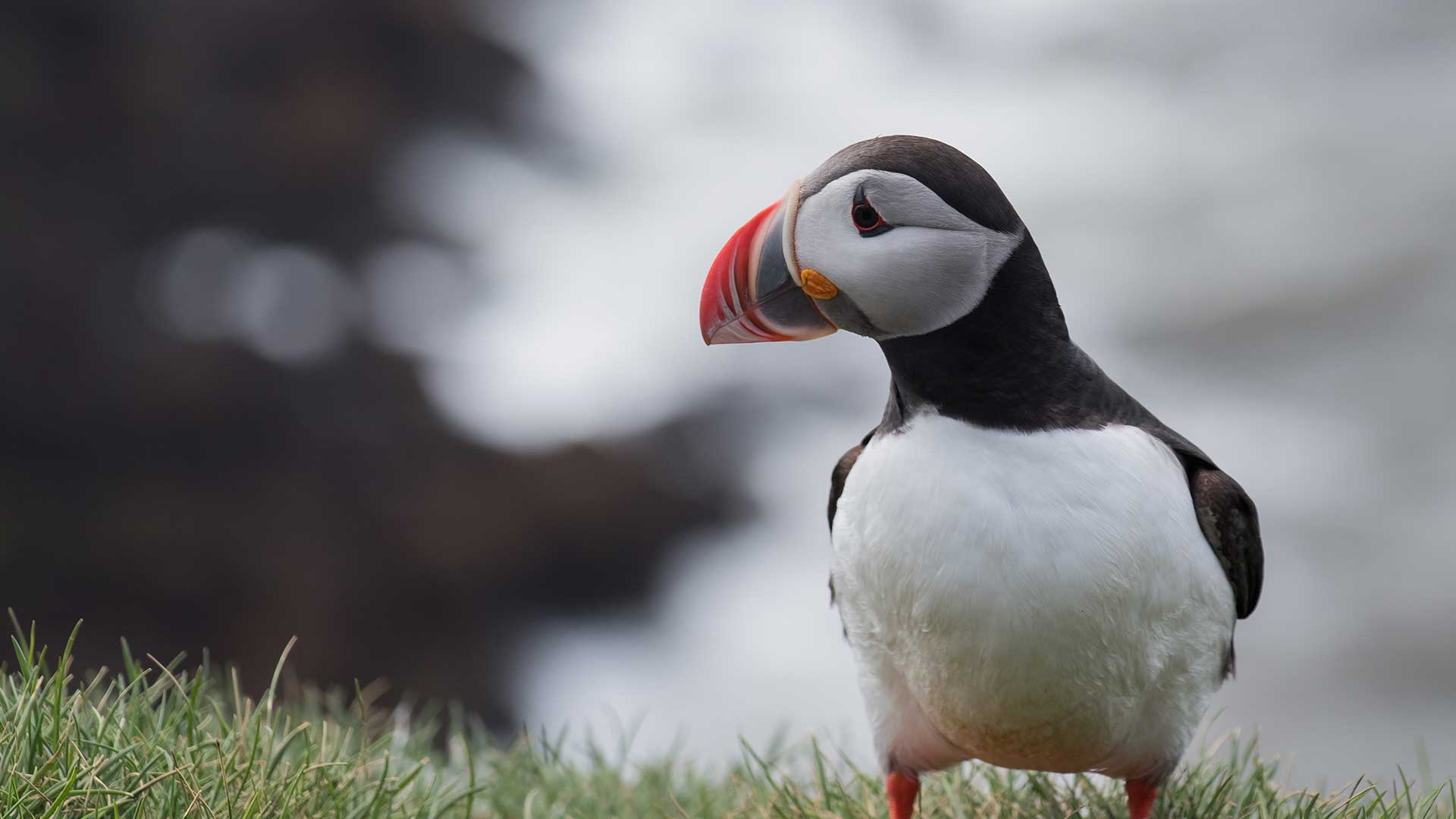Iceland's volcanic archipelago
Vestmannaeyjar, or the Westman Islands, is a stunning archipelago off Iceland’s south coast. Sometimes called “Pompeii of the North,” all of the archipelago’s islands have evolved from underwater eruptions. The newest addition to the group, Surtsey, was created during a submarine eruption that lasted from 1963 to 1967.
Mostly uninhabited, all islands are edged by steep sea cliffs that are home to millions of puffins and other sea bird colonies.
Heimaey, the only inhabited island, is worth a visit if you have time. Short flights to Heimaey depart regularly from the Reykjavík Domestic Airport. You could also hop on the Herjólfur ferry that leaves regularly from Landeyjahöfn on the south coast.
Heimaey is of interest after being the site of an eruption in 1973. The thick lava buried 400 buildings, some of which have been partially uncovered and preserved.
The Eldheimar Volcano Museum on Heimaey focuses on this event, which is one of Iceland’s largest natural disasters. The exhibit looks at the lives of the residents before the eruption saw them evacuate their homes in the middle of the night and never able to return.
On the island, you could also visit the Beluga Whale Sanctuary. This aquarium aims to offer a more natural environment to beluga whales after their life in water parks.
If you love wildlife, Heimaey is a fantastic spot to go puffin watching. Stórhöfði is the rocky, windy peninsula at the southern end of the island where you should head for this. A marked trail in the area makes for a nice hike on days without too much wind.
View South Iceland

